The Greatest VAG Competition Cars
Posted by Awesome on 2nd Nov 2016
Volkswagen Auto Group has been responsible for some of the most iconic, distinctive and significant race and rally cars of all time. These cars have generally been notable by their extreme or unorthodox nature, with the four-wheel drive Audi Quattro being a prime example. At a stroke, the Quattro consigned the likes of the Fiat 131 Abarth and Escort RS1800 to the rallying history books. It's a theme that continues to this day, with the likes of Audi going to extreme and technologically impressive efforts to secure the top step of the podium. With this in mind, here's our rundown of the greatest competition cars ever signed off by the VW Group.
Feel
we've missed an important car? Then make sure you tell us using the comments
box below!
Audi S1 E2 Quattro
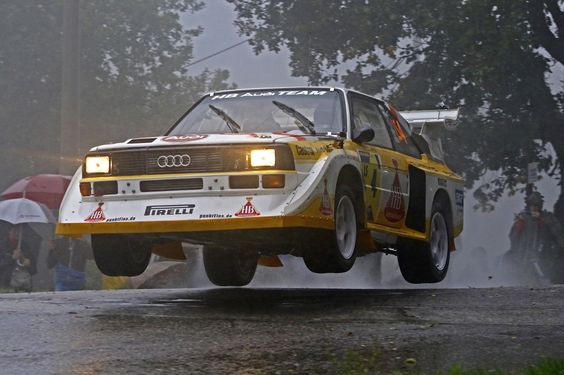
The original A1/A2 Quattro, the long wheelbase machine that made its competition debut in 1981, clearly marked a sea change in world rallying and was able to snatch titles for both Hannu Mikkola and Stig Blomqvist. The problem was that the Quattro had been developed to compete in Group 4, Group B's predecessor and a category with far more stringent, production based rules. This meant that by the time the likes of the Lancia Delta S4 and Peugeot 205T16 debuted later in the decade, the production roots of the Quattro had become painfully obvious, with its front-engined, nose heavy layout being the most obvious weakness.
Audi Sport attempted to cure the Quattro's ill handling by lopping 12.6in from its length and widening its track to create the original 'short' Sport Quattro, yet the new car proved even trickier and twitchier to pilot, possibly thanks to 58% of its weight being above the front axle. This eventually led to the S1 E2, the ultimate Quattro and quite possibly the most extreme Group B machine of all. Audi's boffins made extensive use of aerodynamics to try and tame the unruly beat, while both the radiators and the oil coolers were relegated to the boot in an attempt to improve weight distribution.
The
S1 E2 experiment couldn't completely hide the Quattro's inherent disadvantage,
yet it did allow Audi to once again fight Peugeot on something approaching an
even footing. It wasn't enough to net the Ingolstadt firm another championship
but it did allow Walter Röhrl to crush all comers on the 1985 Sanremo rally
VW Polo R WRC
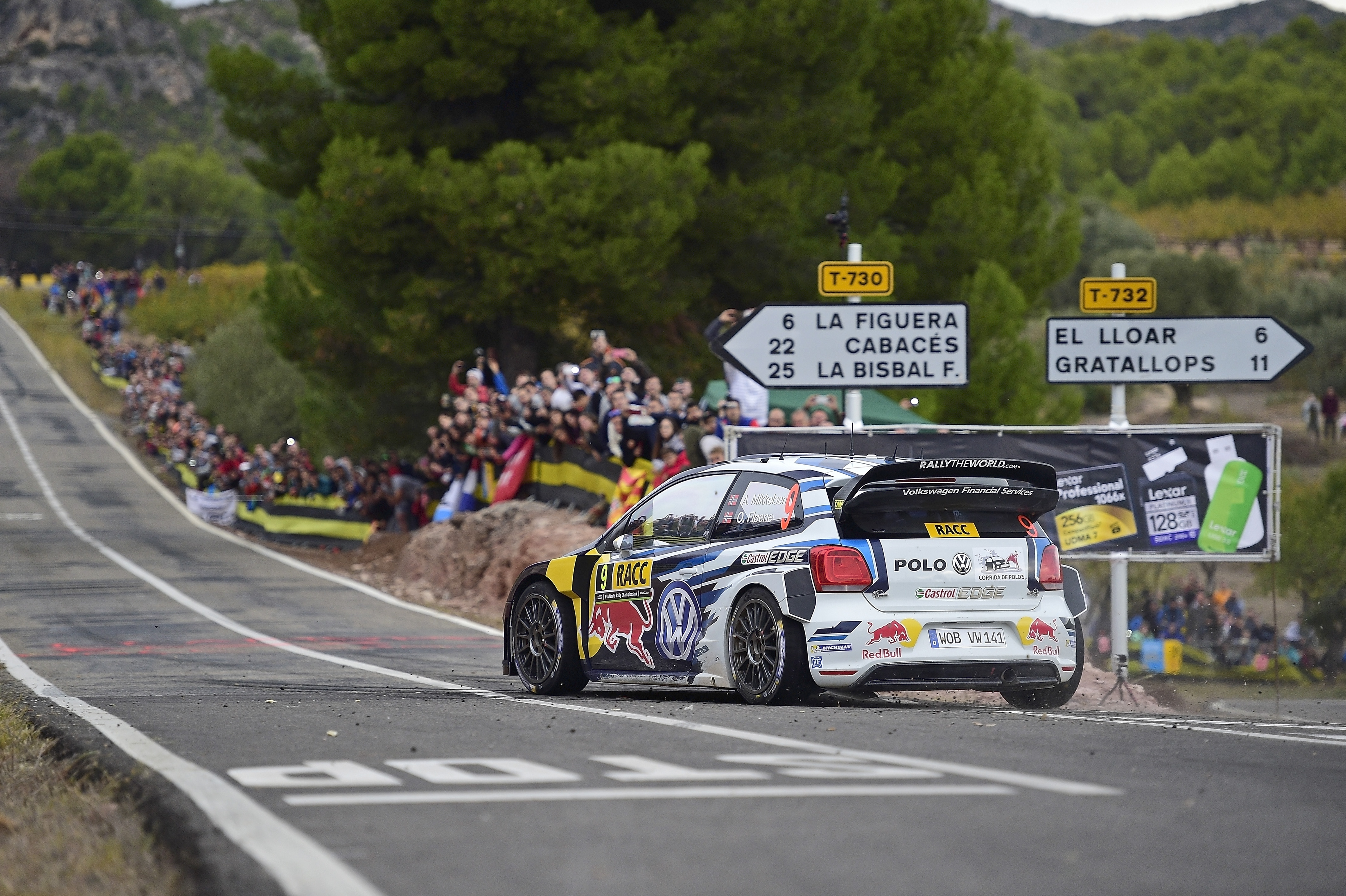
VAG's off-road experience is far from limited to the 1980s, and since 2013 VW has been the dominant force in world rallying, its Polo R able to bludgeon the likes of M-Sport and Citroen Racing into submission. It's worth noting that VW had to start from scratch in this respect, so its ability to so roundly trounce experienced, multiple WRC champions like the aforementioned outfits is hugely impressive.
VW's
WRC success has been built on a decidedly Germanic approach to going motor
racing, I.e, by leaving nothing to chance and learning from the mistakes of its
competitors. The relatively new rules governing the WRC at the start of the
decade, those that permitted small hatchbacks powered by turbocharged 1.6
engines, were certainly attractive to VW, as were the driving talents of
Sebastian Ogier. The Frenchman had made waves for Citroen in 2010 and 2011,
though a deteriorating relationship with the team's top brass allowed VW to
swoop in and poach the youngster at the end of that year. Ogier and VW have
worked together wonderfully ever since, the former able to construct the team
(and its Polo R WRC) around his driving style. The result? VW and Ogier have
won ever Drivers' and Constructors WRC title since 2013, and at the time of writing
the duo had just claimed both 2016 gongs.
Volkswagen Touareg V6 TDI World Record Breaker
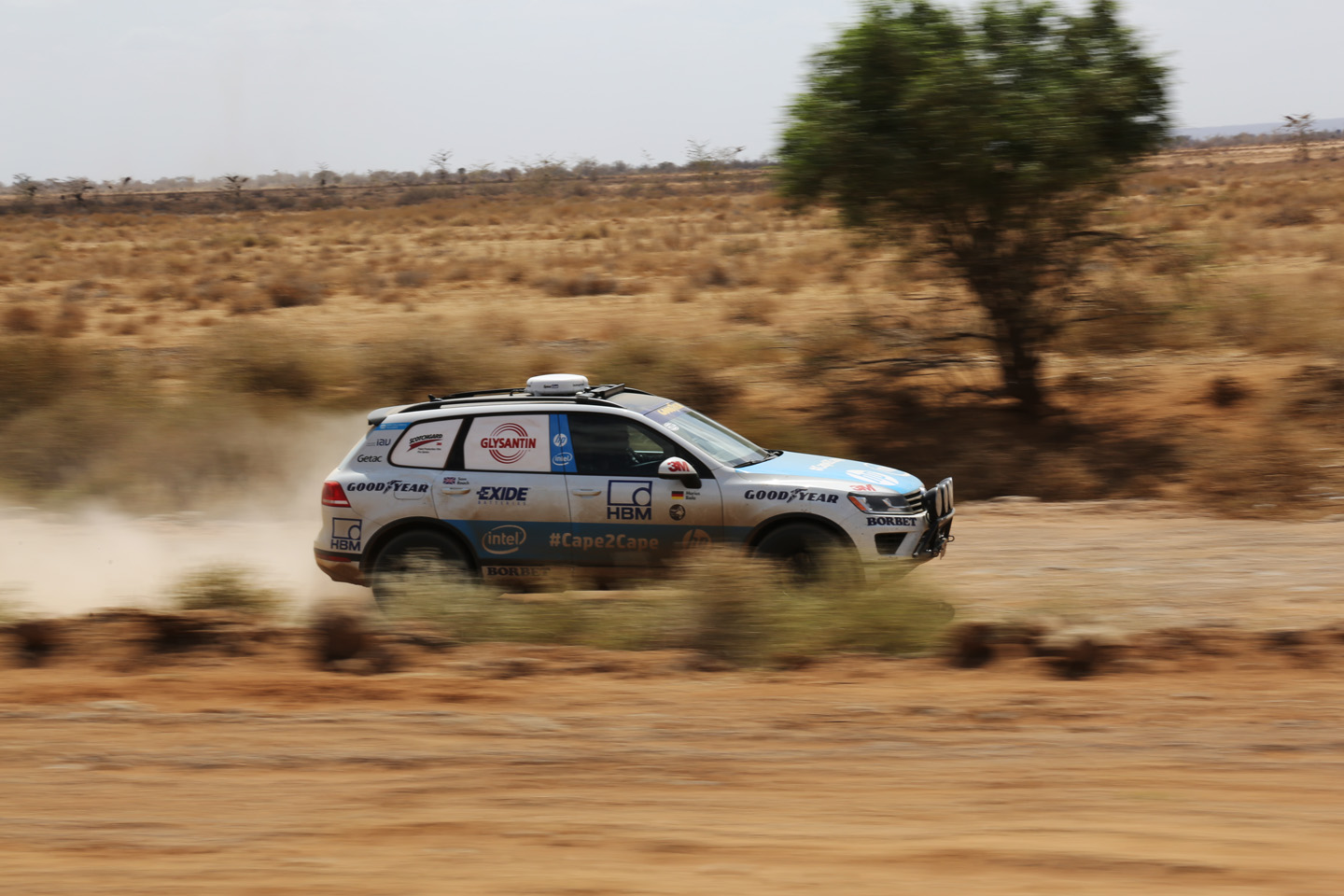
Perhaps a world record-holding vehicle is not people’s usual idea of a competition car, but in its truest sense this particular example, a Touareg V6 TDI, more than fits the bill. It was purpose built by the Volkswagen factory in Bratislava for a very single-minded competition objective: to smash the World Record time to drive ‘Cape to Cape’. The route was nothing if not extreme, taking the team from the Southern tip of South Africa, right up to Nordkapp, Finland, the most Northerly point in Europe. In total it involved crossing 21 countries and covering 17,568kms of some of the world’s worst roads.
This very special Touareg was built from a bare shell by the factory, fully roll-caged and with a trio of Recaro bucket seats for the three-man team. Giant fuel tanks filled the boot and allowed for up to 3,000km between fill-ups, while under-body guards, a completely overhauled suspension setup and Goodyear off-road tyres enabled it to shrug off the worst of Africa's roads. A full satellite internet system kept the car in contact with the outside world throughout, with live data logging of the vehicle and biometrics from the crew being streamed to the World Record base in Europe in real time.
The
crew of three, including Volkswagen Racing UK/RacingLine’s managing director
Sam Roach, more than achieved their objective, completing the course in a
record-breaking 9 days, 4 hours – the previous record being 21 days! Through
non-stop 24 hour driving and keeping the refuel stops to a minimum, together
with a lot of pre-event preparation work to speed up the notoriously slow
African border crossings, the average speed for the full trip was an incredible
49.6mph.
Audi R8/R10 LMP1

Audi has never shied away from motorsport disciplines which allow it to flex its creative technological muscle, and this desire to push vorsprung durch technik to the very limit has been on display within the LMP1 championship for over a decade and a half. Indeed, the firm has spent most the century racking up wins at endurance classics across the globe, all while pushing the boundaries of technical feasibility and design.
The
firm's crushing run of form at Le Mans began with the R8 LMP in 2000, a car
that won at La Sarthe in 2001, 2002, 2004 and 2005. The 2003 gap in its CV?
That's the year when Le Mans was won by Bentley in its Speed 8, a car heavily
based on, you guessed it, the R8! Replaced by the R10 in 2006, Audi continued
its run of tremendous form by winning the world's toughest endurance every year
from 2006 to 2008, in the process becoming the only manufacturer to have done
so with a diesel. This astounding success continued almost unbroken until the
arrival of Porsche in 2015, the Stuttgart firm evidently unimpressed at the
prospect of having its record of 18 Le Mans wins overhauled.
VW Golf Rallye G60
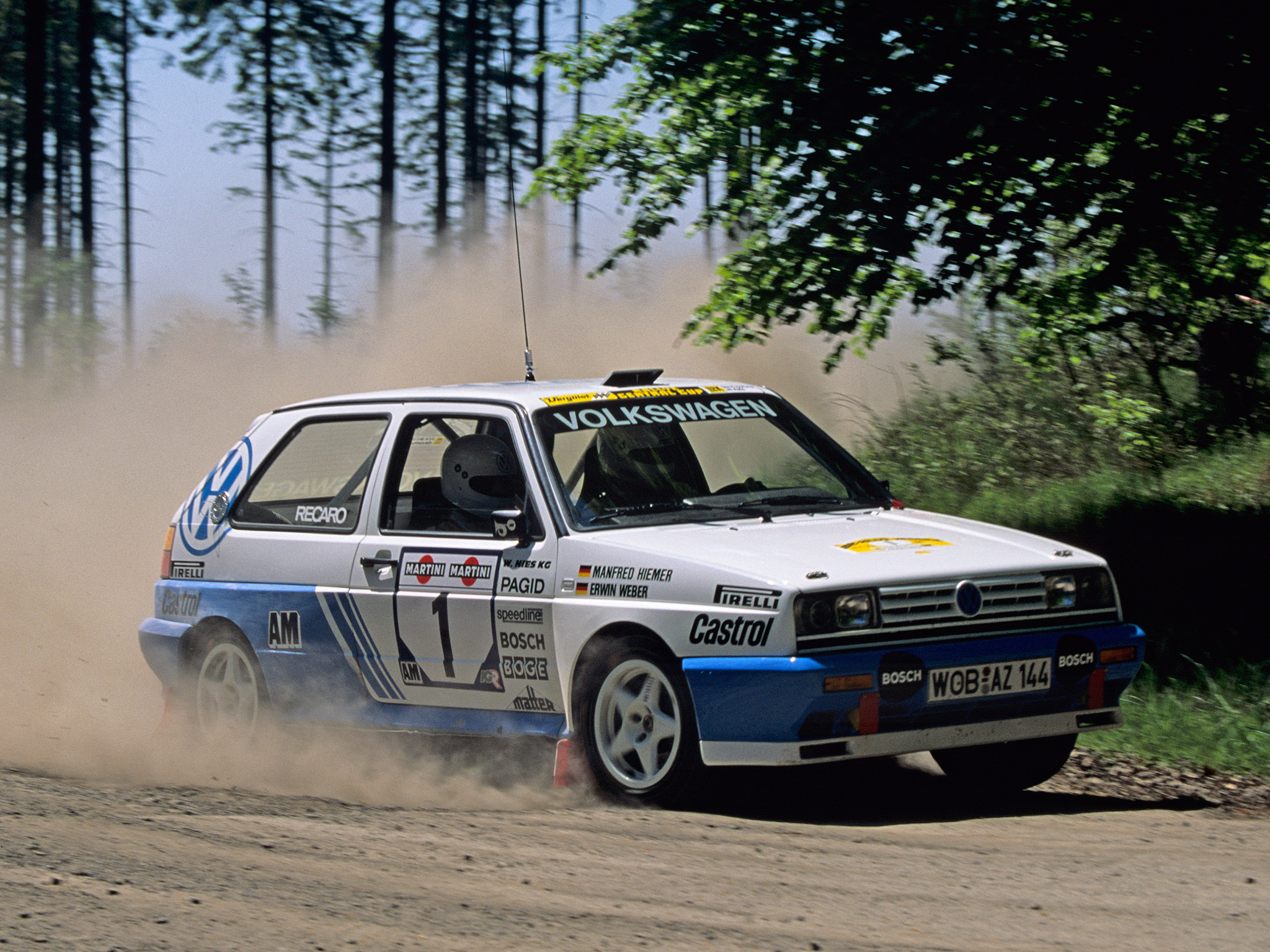
The fall of Group B resulted in some very odd results for some cars that, on paper at least, should've been out of their depth. This encouraged all manner of manufacturers to chance their hand at this rallying lark, VW included.
The Rallye G60 was homologated into Group A in time for the 1990 season, and on the face of it looked to have all the ingredients needed to succeed at the sharp end of the WRC. Four-wheel drive and the instantaneous power and torque provided by its supercharged 1.8 should've enabled it to take the fight to the likes of Lancia and Ford, yet the G60 was beset by annoying reliability niggles from the outset. The Golf's transmission proved a weak link from the very start, and it wasn't uncommon for the team to change gearboxes and propshafts as a matter of course – whether or not they were required at the time! The decision to plump for a supercharger over a turbocharger also limited the G60s potential to make massive power, though it was able to win the German Rally Championship for Erwin Weber in 1991.
Why
are we including this not especially successful Golf in a list of the Greatest
VW competition cars? Because in order to be permitted to go rallying in the
first place, VW had to build 5000 road going homologation specials, and in the
process gave us one of the most desirable and iconic road going Golfs of all.
Volkswagen Racing UK Caddy Cup Racer
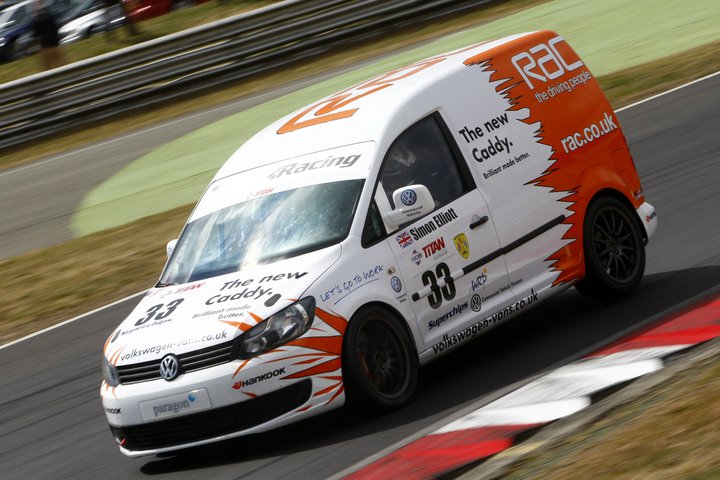
Surely the most unusual vehicle to feature on this list, Volkswagen Racing UK’s RacingLine Caddy Cup Racer was nevertheless a serious racing machine. When Volkswagen Commercial Vehicles wanted to inject some extra dynamism into the Caddy’s image, the opportunity to develop the world’s first racing van seemed too good to resist. With the first generation Caddy racer debuting in 2002 followed by the second-gen in 2005, Volkswagen Racing UK stuck to van principles with a highly-tuned TDI engines up front, and the original Caddy rear beam axle bouncing around at the back. Even with sophisticated 5-link location and multi-adjustable RacingLine coilovers replacing the leaf springs, the heavy rear suspension was always pretty compromised on track.
It
was the opportunity to develop Caddy 3 – using the facelift 2011 van – that at
last gave Volkswagen Racing the freedom to come up with a more track-orientated
vehicle. With smooth 2.0TFSI K04 power replacing the challenge of the
high-powered TDIs, the Caddy finally had the straight-line speed to compete
against Golf and Scirocco Cup cars. A full Golf Mk6 independent rear suspension
system was grafted into the rear and mounted into the full roll cage. The full
complement of RacingLine parts – from brakes, to engine mounts, intake,
suspension and wheels – completed the spec sheet. At last, a Caddy with the
power and handling to compete was born. Lap records and podium finishes were
the result. It was perhaps the ultimate example of VWR UK's commitment to
motorsport, and the capabilities inherent within its sizeable range of VAG
tuning parts!
Audi IMSA 90 GTO
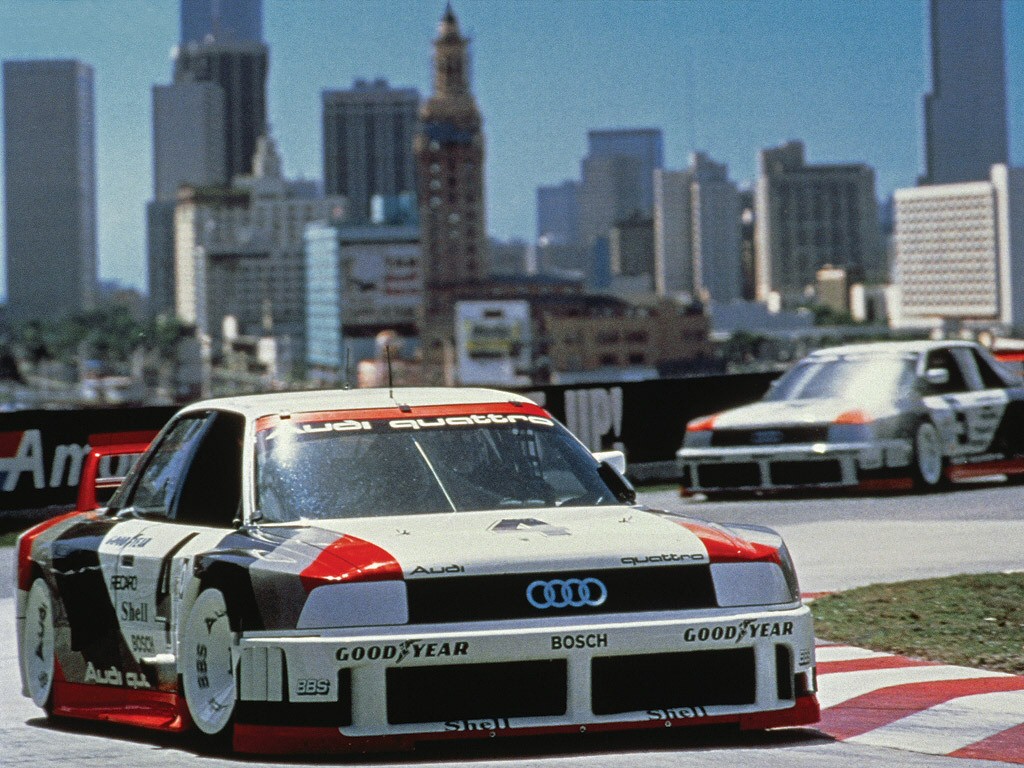
Evidently more than a little hacked off at the cancellation of Group B at the end of 1986, Audi instead opted to focus its efforts (and its considerable expertise in the fields of forced induction and four-wheel drive) on the American IMSA race series. The rules governing the series at the time meant that it was effectively a silhouette formula, so although the IMSA GTO looked a little like the 90 road cars which Audi was trying to flog in the US at the time, in reality it shared very little other than a few choice, cosmetic components. It was basically carbon fibre body dropped over a bespoke space-frame with the S1 E2's engine slung up front!
The IMSA GTO made its debut in 1989 and wasted little time in bludgeoning all comers. Audi's level of professionalism was clear to see, as was the advantage afforded by its sophisticated four-wheel drive system. The GTO's 2.1 five cylinder engine never made less than 700bhp, enough to simply overwhelm opposition from Ford and Nissan, though its crushing success was probably helped along by the roster of drivers it'd signed up to drive, including Hurley Haywood, Hans-Joachim Stuck, Scott Goodyear and Walter Röhrl.
Audi
won 7 of the 9 races on the 1989 IMSA calendar in some style, yet the firm's
unwillingness to tackle the pair of endurance events at Daytona and Sebring
ultimately cost it dearly, and Audi missed out on the title to Ford by 45
points! The 90 GTO was retired after that season and Audi instead turned its
attention to the DTM.
Seat Ibiza F2 Kit Car
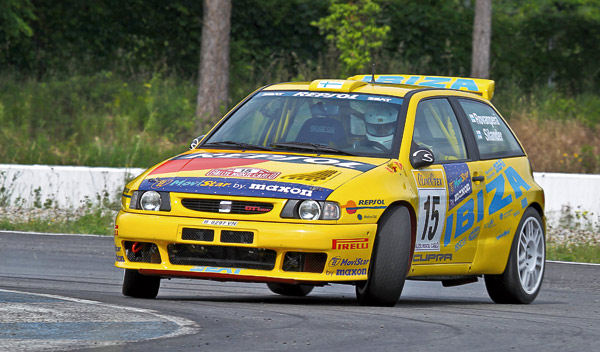
Proving that the '90s really was a golden decade for racing and rallying, 1996 saw the debut of the Seat Ibiza GTi, an F2 'Kit Car.' Kit Cars were born out of Renault's desire to win French tarmac championship rallies, something the (France based) FIA ultimately agreed to. The rules stipulated that the resulting cars be front-wheel drive and powered by NA 1600cc engines, but other than that they were allowed to be incredibly potent, very focussed, tarmac-honed bits of kit.
The Ibiza is significant as it allowed Seat to acquire its first taste of professional rallying, and because it ultimately evolved into a decidedly successful F2 car. Initially something of a disappointment, the Ibiza was steadily developed and by 1997 it could call upon 250bhp and trick suspension, the power routed through six-speed sequential to a sophisticated Hewland Limited Slip Differential.
The
arrival of the E2 model in 1997 brought more power and even wider bodywork, a
smattering of aerofoils intended to improve traction, and completely overhauled
rear suspension, changes which brought about a reversal in Seat's fortunes. The
Spanish manufacturer was able to win the FIA's World 2L Championship for Makes
three times on the bounce between 1996 and 1998.
Skoda Octavia WRC
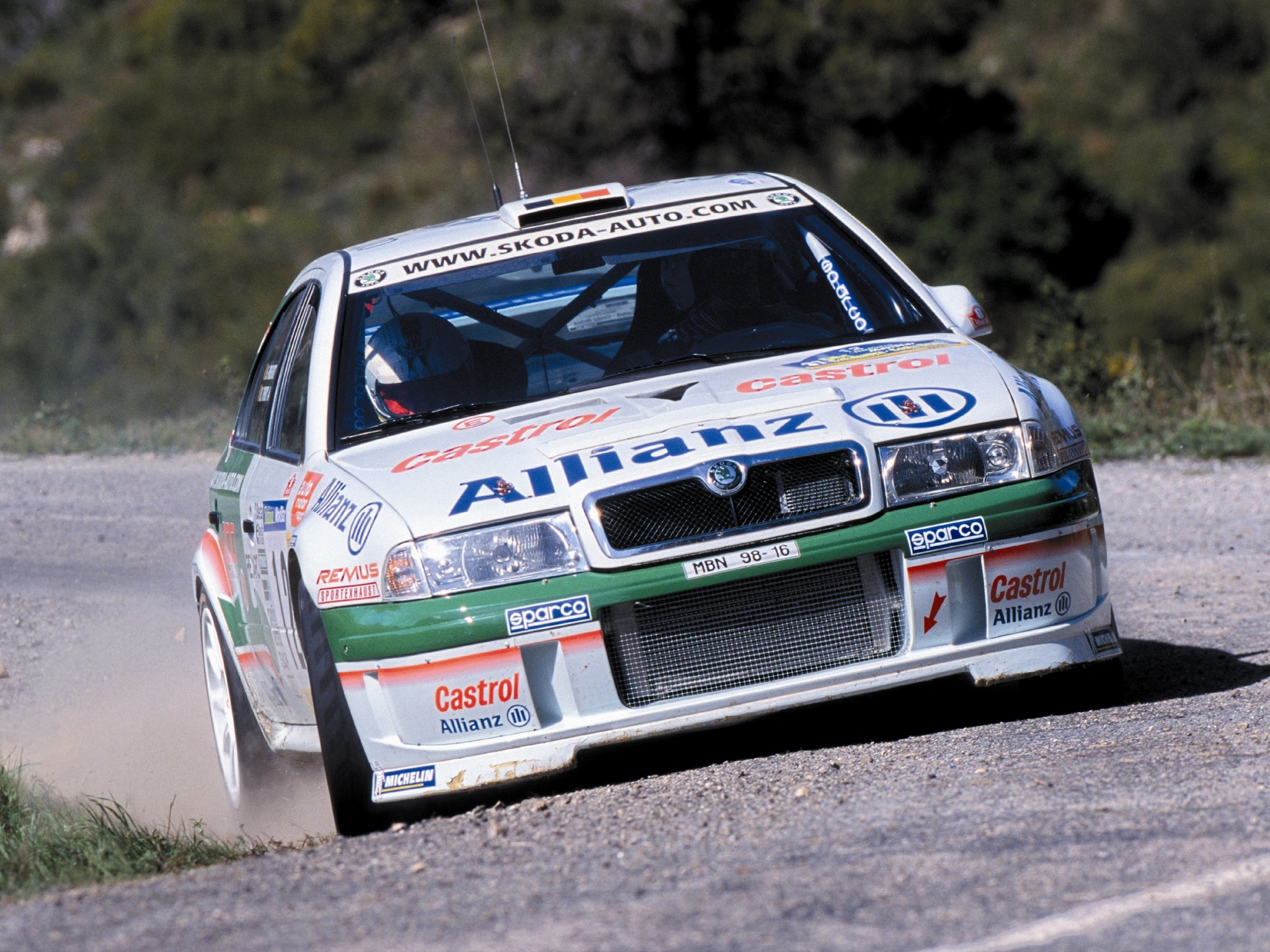
We're going to come clean right away and admit that, no matter how we try and spin it, the Skoda Octavia WRC was not the most successful of rally cars, so its inclusion here is primarily based on less quantifiable factors like looks, presence and noise.
Skoda was no stranger to rallying having campaigned all manner of air-cooled, rear wheel drive machines in the '60s, '70s and '80s, yet it took the launch of the Octavia for it to really get serious about the sport. The decision to use the Octavia for the all new WRC programme was a contentious one as the car itself was larger and longer than the team would've ideally liked, yet the FIA's rules forbade the use of anything smaller (though this didn't prevent Peugeot from getting around the rules by extending the bumpers on its 206 WRC). Skoda was also forced to buy an 'off the peg' transmission from Prodrive, though it was able to homologate a revised and highly tuned version of the road car's 20v engine, albeit one with its cubic capacity increased to 1993cc.
These
factors, along with Skoda's modest budget, ensured that the Octavia WRC was
destined to never win a WRC rally, though a best place of 3rd on the
2001 Safari Rally proved that it had at least retained the most notable trait
of older Skoda rally cars, toughness! It might not have brought home the
rallying bacon then, but it was certainly a characterful car. The 20v engine sounded
a bit like a bag of spanners being put through a particularly aggressive spin
cycle, while its sheer size meant it was always a firm fan favourite.
VW Beetle GRC
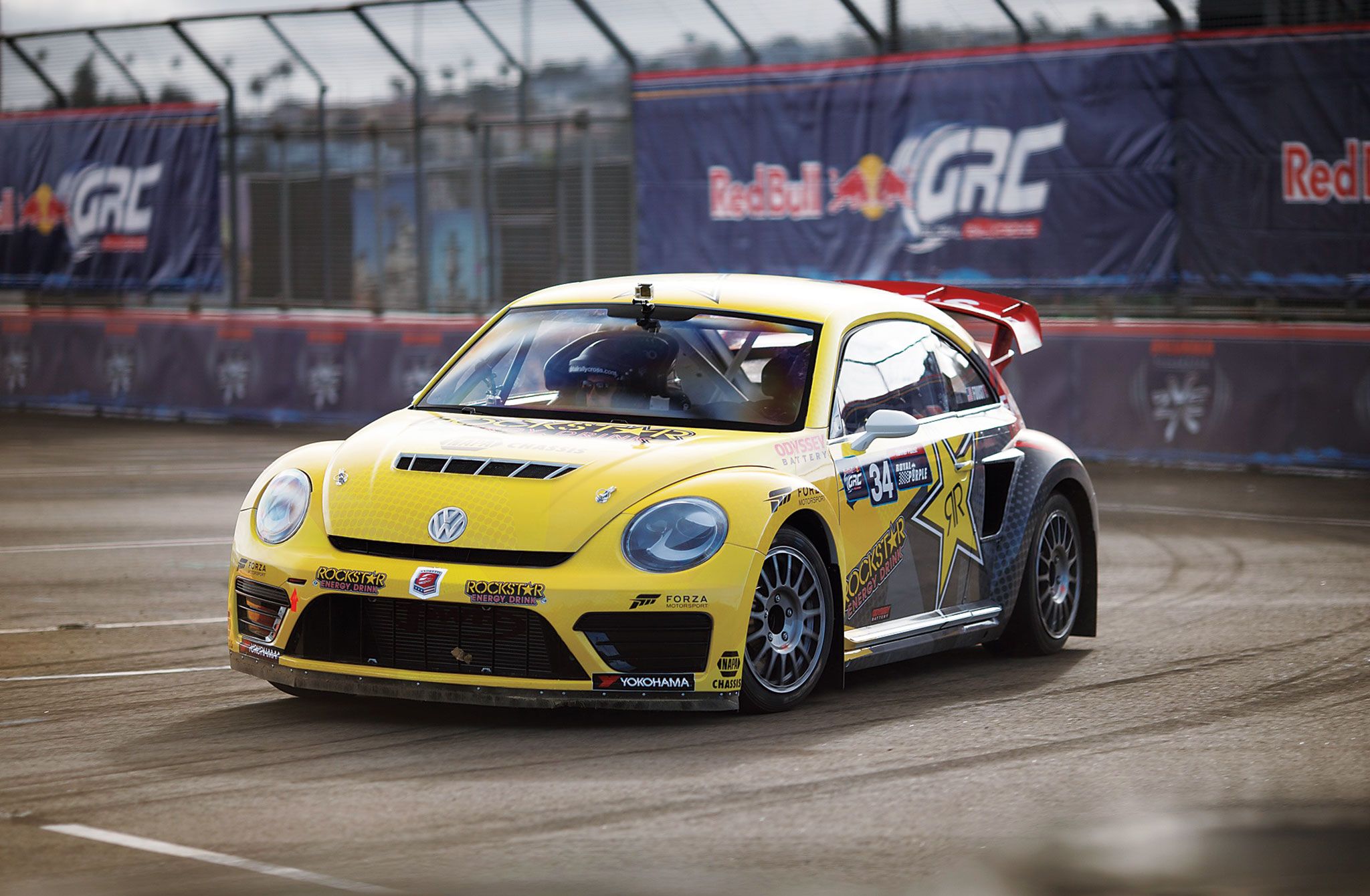
One gets the impression that VW is currently trying everything it can to rid the 'new' Beetle of its girly image, and one sure fire way of doing that is by using it for motorsport, specifically the Red Bull Global Rallycross Championship. Forget any notions of dash-mounted vases carrying flowers and cutesy pastel shades, the latest Beetle is a fully paid up rallycross weapon, one powered by a 2.0 four making 560bhp. There's permanent four-wheel drive (because of course there is, it's a rallycross car), wide arches, big wings and specialist dampers with a massive 230mm of travel.
The
Beetle GRC has more than met VW's expectations so far, collecting victories and
setting fastest laps from the moment it debuted in 2014, then allowing Scott
Speed to net championship honours in both 2015 and 2016.
Volkswagen Racing UK Golf Mk4 TDI
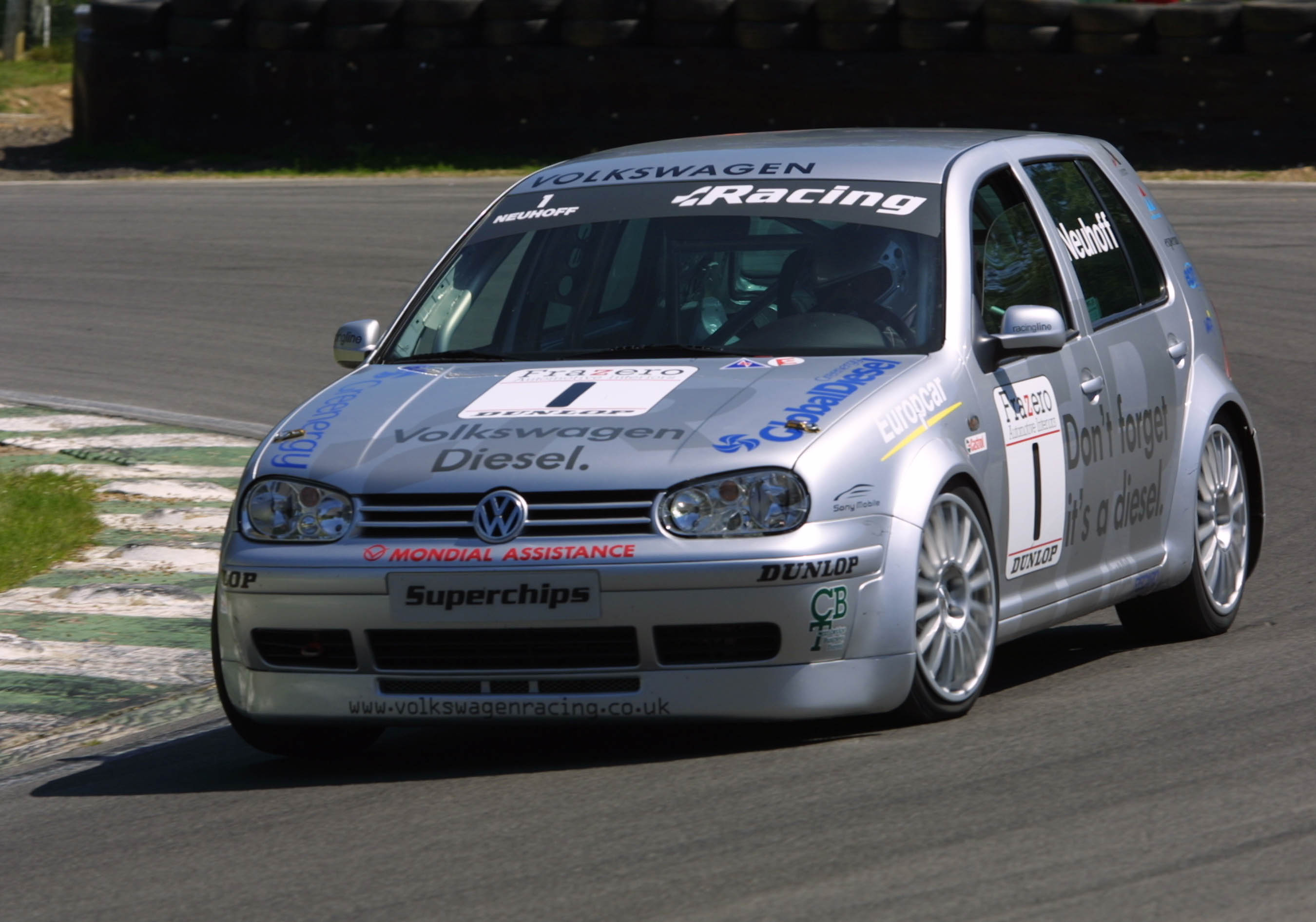
2001 saw VW debut its 'don't forget it's a diesel' campaign, one designed to promote the idea that TDIs could be fast as well as economical, so what better way to demonstrate that claim than to take the opportunity to put a diesel race car up against established petrol-powered racers? Volkswagen Racing UK happily took up the challenge. With TDI tuning very much in its infancy, the base 150ps 1.9 PD engine formed the heart of the new Golf. A lot of development work followed, with RacingLine’s engineers having to rapidly learn the intricacies of diesel tuning and the limitations of the 1.9 hardware. They eventually coaxed it into making 250bhp, an impressive figure for the time and more than enough to take the fight to the petrol cars. In fact the biggest limiting factor for the engineers was Volkswagen’s (understandable) requirement that the car could not visibly smoke on track. Had that not been a requirement, even more power would have been available.
It was a hard car to drive, with a very narrow power band meaning many more gear-changes were required than in a petrol car. A close-ratio ‘box helped with transferring this power, but the inevitable time spent shifting between the 6 speeds lost time. But the immense torque when the turbo was spooling certainly help regain the advantage. The car was at its best at high-speed in 6th gear, when those TDI torque levels helped push the car onwards against its petrol rivals.
It was therefore little surprise that Thruxton circuit – the UK’s fastest track – was the scene of its first win. Not only was this the first TDI win in the Volkswagen Racing Cup, it was also the first win in the world for a diesel car. Many other manufacturers have of course gone on to achieve great things in motorsport with diesels, but the little RacingLine Golf TDI will always have a place in the history books of world motorsport.
